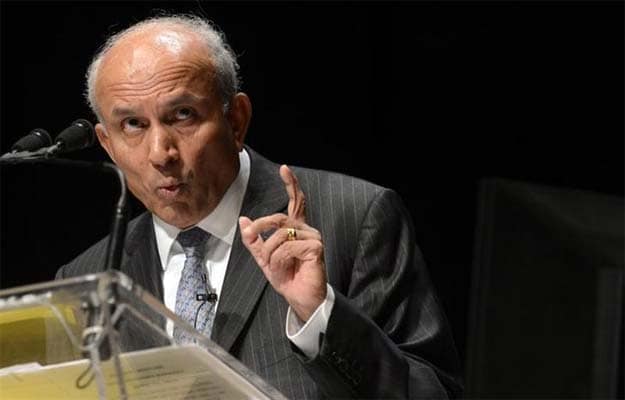Hyderabad-born Prem Watsa is the founder, chairman, and chief executive of Fairfax Financial Holdings, the company that has bid $4.7 billion to acquire troubled smart phone maker BlackBerry. Fairfax is also the top shareholder in BlackBerry.
Mr Watsa was born in 1950 and trained as a chemical engineer at IIT Chennai. He moved to Canada in 1972, where he kept a low profile for a long time. For his first 15 years since he took over Fairfax in 1985, he barely spoke to a reporter, and he only started holding investor conference calls in 2001.

Mr Watsa is often described as the Canadian Warren Buffett because he also takes the long view. Mr Watsa is an old hand at looking wrong today and right tomorrow.
Watsa's tryst with BlackBerry:
Just over a year ago, Mr Watsa had said that BlackBerry was a "Canadian success story," a good buy and a likely turnaround story even though its market share was tumbling.
BlackBerry's fortunes have only deteriorated since then, with the latest blow coming on Friday, when Blackberry said it would cut 40 per cent of its workforce.
Mr Watsa stepped down from the BlackBerry board of directors in August, citing a potential conflict of interest, as the company said it was exploring the sale of itself and other options. But as soon as Mr Watsa stepped down from Blackberry's board, speculation grew that he would launch a bid for the troubled smartphone maker.
And that's exactly what he did on Monday. The $9 a share tentative offer will set a floor for any counteroffers that might emerge for Blackberry, which has been on the block since August.
Mr Watsa has suggested that investors looking for a short-term rebound in BlackBerry might be disappointed.
"Is it going to turn around in three months, six months, nine months? No," he told reporters. "But if you're looking four, five years ... We make investments over four or five years."
So far, BlackBerry has not been a turnaround story under Mr Watsa's watch. Since January 2012, a period when Fairfax has raised its stake in the company from a little more than 2 per cent to just under 10 per cent, BlackBerry's share price has slumped.
Fairfax's long road to success:
Fairfax, both an insurance holding company and Mr Watsa's investment vehicle, was on the losing end of bets against the market in the mid-2000s as Mr Watsa waited for the U.S. mortgage industry to collapse.
The company's stock fell by 50 per cent between mid-2003 and mid-2006. But when the market began to weaken in 2007, Fairfax began notching up investment gains, pulling in billion-dollar profits in 2007 and 2008.
Since their 2006 low of C$100, Fairfax's shares have more than quadrupled.
Fairfax has generally not been known as an activist investor, but Mr Watsa has not shied away from a fight, launching a $6 billion lawsuit against a group of hedge funds in 2006, accusing them of conspiring to the drive the company's shares down so they could be shorted. A short position enables an investor to profit when a stock drops.